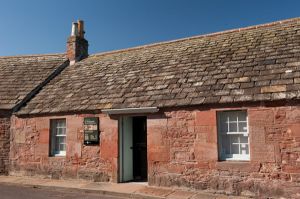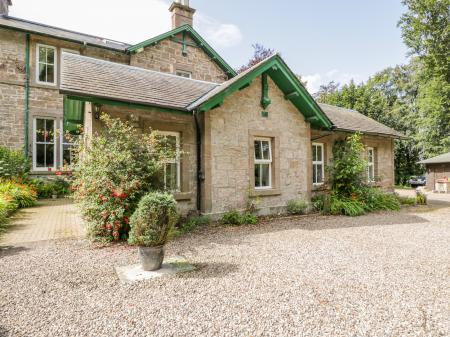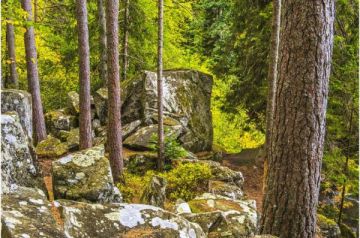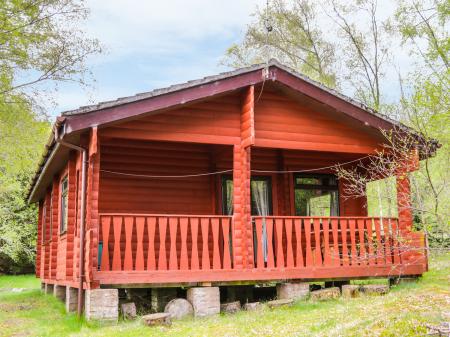
It appears that St Vigeans was the site of an 8th-century monastery. It is likely that many of the carved stones found here were erected to mark the graves of monks, abbots, or local Christian adherents.
The finest stone in the St Vigeans collection is the Drosten Stone, a carved cross slab dating to the late 8th or early 9th century. This is wonderfully carved with both Christian and traditional Pictish symbols such as monsters, animals, a grinning devil, and a vivid hunting scene.
One panel of the stone is inscribed with Roman lettering which bears the name of Drosten and further text which is hard to interpret but may be further proper names. It is possible that the stone was commissioned by two followers of Drosten, who may have been a local nobleman or saint. But that is only one of the numerous carved stones on display. There are interpretive panels that tell the story of the St Vigeans site and the meaning of Pictish art.
The museum is operated by Historic Scotland, but it is not open regular hours. One of the HS staff told me that there were simply not enough visitors to keep it open regular hours. But you can arrange to see the stones by contacting the HS staff at nearby Arbroath Abbey, only about 1 mile away. You can also ask the museum custodian for the keys to the medieval church of St Vigeans across the street.
St Vigeans museum is one of the best places in Scotland to see Pictish sculptured stones gathered together. The stones are well worth seeing, particularly the Drosten Stone, which must be counted among the highlights of Pictish art. It is just a shame that the museum is not open regularly. If the museum is not open, I can highly recommend a visit to the Meigle Pictish Stone Museum, which has an even better collection of Pictish stones, and is regularly open as well!
Unfortunately, I wasn't allowed to take photos inside the museum, which is a real pity as the Pictish stones are superb and I'd love to share some images.





